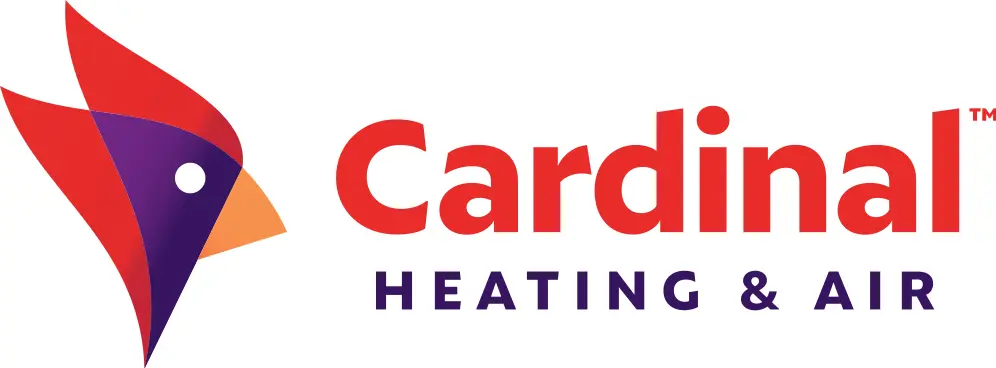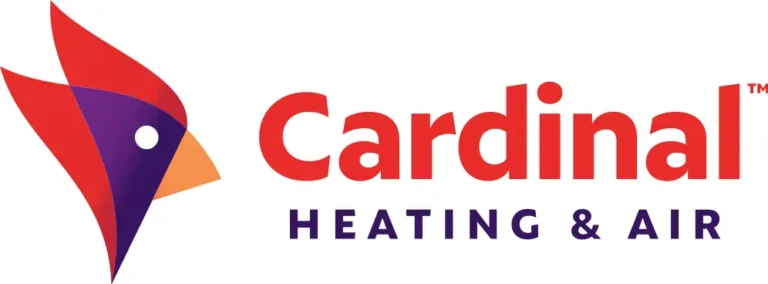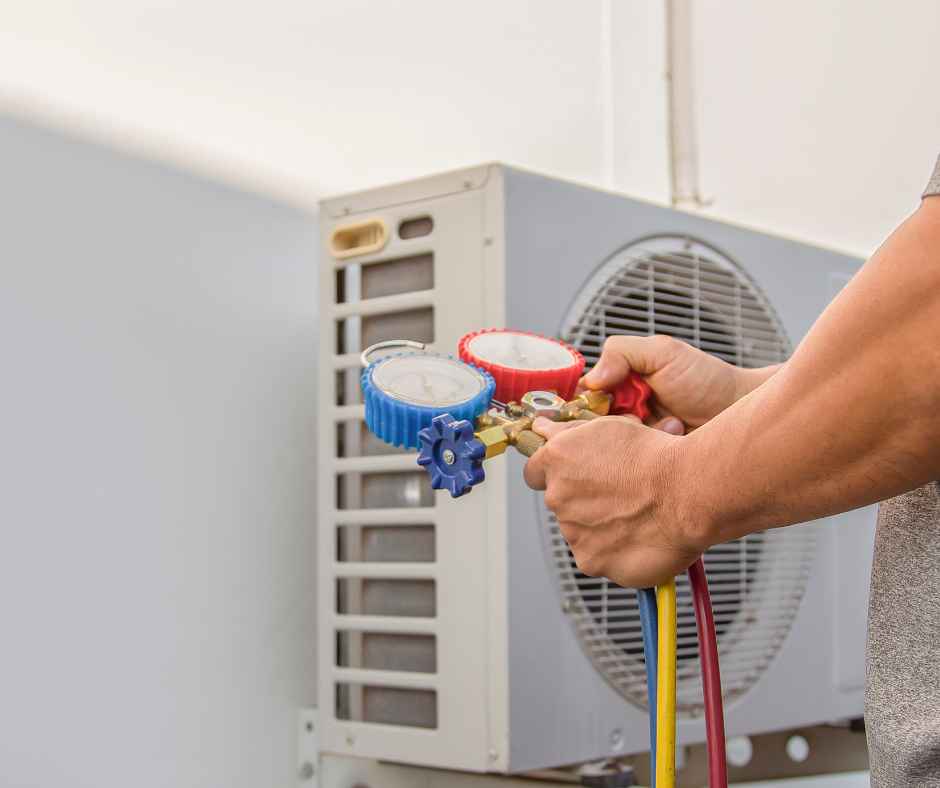As the HVAC industry makes strides toward more eco-friendly solutions, the phaseout of R-410A refrigerant is a key change that homeowners should understand. This shift impacts the way HVAC systems are maintained and repaired, particularly as newer refrigerants such as R-454B and R-32 become more common. For those considering an HVAC upgrade, now is the time to understand the implications of the R-410A refrigerant phaseout, what alternative refrigerants bring to the table, and how Cardinal Heating & Air can assist in navigating this transition.
What is R-410A Refrigerant?
R-410A refrigerant has been widely used in residential and commercial HVAC systems for the past two decades. Originally introduced to replace R-22, R-410A was celebrated for its ozone-friendly formula and improved energy efficiency. This refrigerant quickly became standard for air conditioning and heating units, particularly because it provided strong cooling capabilities and supported environmentally-conscious HVAC practices by reducing ozone depletion potential (ODP).
However, as global regulations focus on reducing the impact of greenhouse gases, the relatively high global warming potential (GWP) of R-410A has led to its scheduled phaseout. This means that R-410A will soon become less available as production gradually stops, encouraging homeowners and businesses to switch to systems that use more eco-friendly refrigerants.
Why is R-410A Being Phased Out?
The phaseout of R-410A refrigerant is part of a larger initiative to lower greenhouse gas emissions worldwide. The Kigali Amendment to the Montreal Protocol is one such global effort, aiming to reduce the use of hydrofluorocarbons (HFCs) like R-410A, which are known to contribute to global warming. The Environmental Protection Agency (EPA) in the United States has also aligned with these goals, initiating regulations to limit the production and import of high-GWP refrigerants.
Starting in 2024, production restrictions on R-410A will begin as part of a phased approach with stricter regulations taking full effect on R-410A by January 1, 2025. This transition encourages HVAC manufacturers to adopt alternative refrigerants that align with global sustainability goals. For homeowners, this means that the cost of maintaining R-410A systems may rise, and older units using R-410A will eventually need to be replaced or retrofitted.
What Does the Phaseout Mean for Homeowners?
If your current HVAC system relies on R-410A refrigerant, you may wonder how this phaseout will affect you. Here are several factors to keep in mind:
- Future Maintenance Costs: While R-410A will still be available for maintenance and repairs, its production will gradually decrease, potentially leading to higher costs over time. As the supply of R-410A shrinks, homeowners may find that repairs become pricier, creating an incentive to consider systems that use alternative refrigerants.
- The Opportunity for an HVAC Upgrade: An HVAC upgrade to a system compatible with low-GWP refrigerants can be a smart choice, particularly if your current system is approaching the end of its lifespan. By upgrading to a system that uses an alternative refrigerant, you not only future-proof your home but also reduce its environmental impact and potentially lower your energy bills.
- Enhanced Resale Value: Many buyers today are looking for homes equipped with modern, energy-efficient systems. An upgraded HVAC system that uses an eco-friendly refrigerant may add appeal and value to your property, especially in markets where sustainability is a high priority.
What Are the Alternatives to R-410A?
As the industry moves away from R-410A refrigerant, two notable alternatives are emerging: R-454B and R-32 refrigerants. Both options are environmentally friendly and compatible with the latest HVAC technology. Here’s a closer look at each:
R-454B Refrigerant
One of the leading alternatives, R-454B refrigerant, is specifically designed to replace R-410A in new HVAC systems. It has a substantially lower GWP, making it an eco-friendly option that aligns with global climate goals.
- Environmental Impact: With a GWP of 466, R-454B has a significantly smaller impact on global warming compared to R-410A. This reduction supports the HVAC industry’s move toward sustainability while maintaining effective cooling performance.
- Efficiency and Compatibility: R-454B is formulated to deliver comparable efficiency to R-410A while producing less environmental impact. Although it’s primarily suited for new systems, HVAC manufacturers are making advancements to facilitate the transition smoothly.
- Safety: Classified as an A2L refrigerant, R-454B has a low flammability level, allowing it to be safely used in residential and commercial HVAC units while still delivering efficient cooling.
R-32 Refrigerant
Another promising R-410A replacement is R-32 refrigerant. Commonly used in systems worldwide, R-32 has gained attention for its balance of high energy efficiency and reduced environmental footprint.
- Lower GWP: R-32 has a GWP of 675, far lower than that of R-410A, which makes it a more environmentally responsible option. Although it doesn’t have as low a GWP as R-454B, it still represents a significant reduction and aligns with environmental standards.
- Energy Efficiency: With its superior volumetric cooling capacity, R-32 refrigerant allows HVAC systems to operate more efficiently, reducing energy consumption while maintaining optimal indoor comfort.
- Compatibility with Modern Systems: R-32’s high cooling capacity means that it works well with compact HVAC designs, and many modern systems are already equipped to use R-32, making it an accessible and effective solution for homeowners looking to upgrade their HVAC systems.
Benefits of Upgrading Your HVAC System During the R-410A Phaseout
The phaseout of R-410A presents an excellent opportunity for homeowners to upgrade to modern, energy-efficient HVAC systems. Here are some benefits of upgrading:
- Reduced Environmental Impact: Newer systems designed for low-GWP refrigerants like R-454B and R-32 significantly reduce greenhouse gas emissions, helping homeowners reduce their environmental footprint.
- Cost Savings: Although the initial investment in an HVAC upgrade may seem steep, the energy savings from modern, efficient systems can lead to long-term reductions in energy bills. Additionally, upgrading to a system that uses R-454B or R-32 refrigerant can save on future maintenance costs related to R-410A.
- Improved Indoor Comfort: Modern HVAC systems are designed to provide consistent, efficient heating and cooling, ensuring your home remains comfortable year-round. Plus, these systems often include advanced features that improve indoor air quality, humidity control, and temperature stability.
- Future-Proofing: By upgrading your HVAC system now, you’re preparing your home to comply with future environmental standards and regulations, while enjoying the benefits of advanced technology and more reliable performance.
When to Consider an HVAC Upgrade
If your HVAC system is aging or requires frequent repairs, now may be an ideal time to explore an upgrade. Older units that rely on R-410A refrigerant may become increasingly costly to maintain as supplies dwindle, and upgrading to a modern system can provide enhanced efficiency and reliability. Cardinal Heating & Air can help you determine whether an upgrade to an R-454B or R-32 compatible system is the best option for your home.
R-410A Phaseout and Your HVAC System
The R-410A refrigerant phaseout signals a significant shift in the HVAC industry, and staying informed is crucial for homeowners who want to make the best choices for their home. Transitioning to a system that uses R-454B or R-32 refrigerant provides environmental benefits, enhances energy efficiency, and prepares you for the future.
If you’re ready to explore options for an HVAC upgrade or need guidance on the R-410A phaseout, contact Cardinal Heating & Air. Our team is ready to answer your questions, provide expert advice, and help you find an eco-friendly HVAC solution tailored to your home’s needs.


